- Home
- Prelims
- Mains
- Current Affairs
- Study Materials
- Test Series
Dec 7, 2021
NEARLY 46 LAKH UNORGANIZED WORKERS HAVE BEEN REGISTERED UNDER THE PRADHAN MANTRI SHRAM YOGI MAAN-DHAN PENSION SCHEME
Recently, 46 lakh unorganized workers have been registered under the Pradhan Mantri Shram Yogi Maan-dhan pension scheme.
Pradhan Mantri Shram Yogi Maan-dhan pension scheme

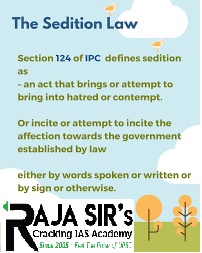
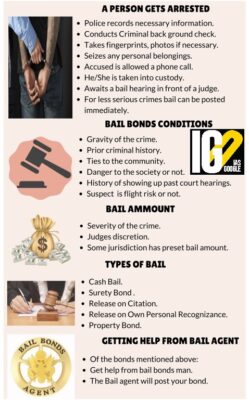
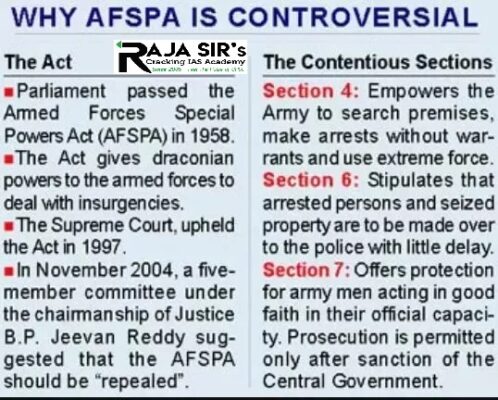

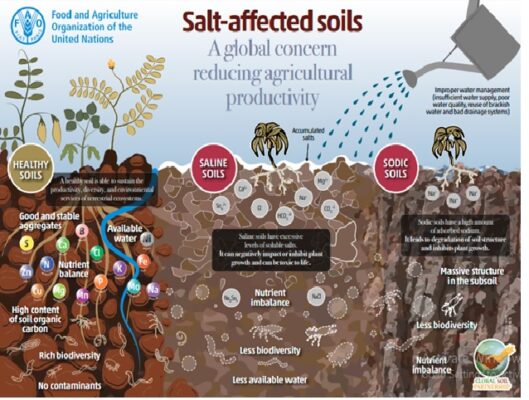

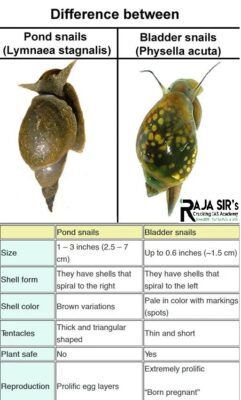
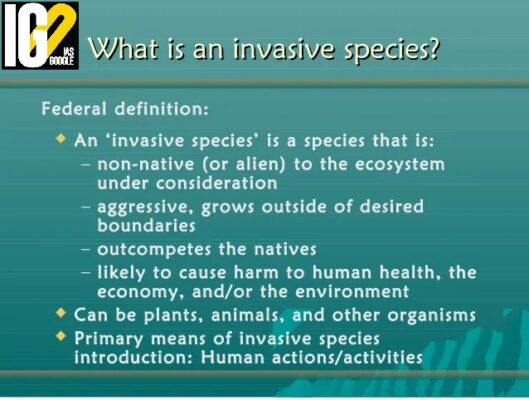


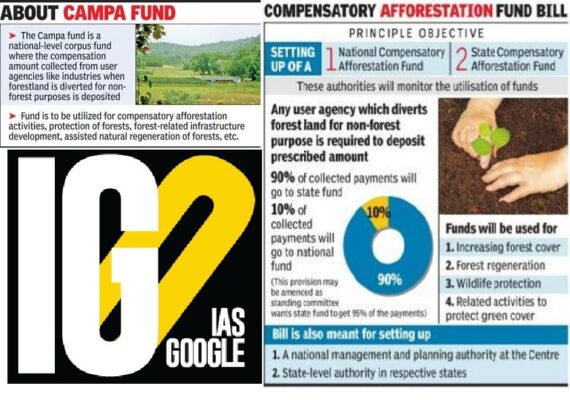
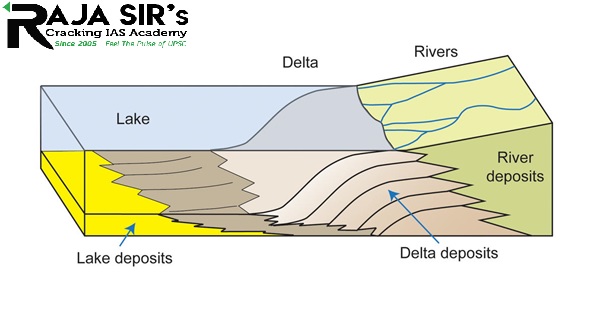
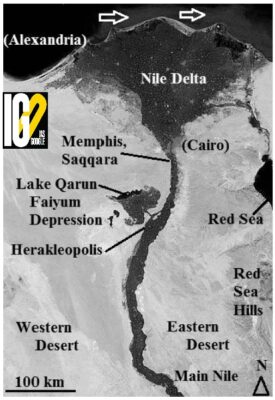
 Arcuate Delta
Arcuate Delta

- Launched by: Ministry of Agriculture & Farmers Welfare and Ministry of Labour & Employment in 2019.
- Implementation through: Life Insurance Corporation of India (LIC) and CSC e-Governance Services India Limited (CSC SPV).
- LIC is the Pension Fund Manager and responsible for Pension pay out.
- To provide old age protection in the form of a monthly pension.
- To provide social security for Unorganised Workers.
- Under this scheme, a minimum assured monthly pension of ₹3000will be provided to the unorganized workers after attaining the age of 60 years.
- If the subscriber dies, the spouse of the beneficiary shall be entitled to receive 50% of the pension as a family pension.
- Voluntary and Contributory Pension Scheme
- Matching Contribution by the Government of India
- In this, 50% prescribed age-specific contribution is made by the beneficiary and the matching contribution by the Central Government.
- Should be an unorganized worker (UW)
- Entry age between 18 and 40 years
- Monthly Income Rs 15000 or below
- Should Not be:
- Engaged in Organized Sector (membership of EPF/NPS/ESIC)
- An income taxpayer
- Should be having
- Aadhar card
- Savings Bank Account / Jan Dhan account number with IFSC
- The editor was charged with sedition for an editorial aimed at igniting enmity between the Assamese and Bengali-speaking people of Assam.

- Sedition means any act or speech that leads to insurrection against the State.
- Origin of Sedition law in India is connected to the Wahabis Movement of the 19th century.
- This was an Islamic revivalist movement and was led by Syed Ahmed Barelvi.
- Since 1830, the movement was active but in the wake of 1857 revolt, it turned into armed resistance, a Jihad against the British.
- The British termed Wahabis as rebels and carried out military operations against Wahabis.
- Raising of slogans against the government.
- A speech made by a person must incite violence / public disorder for it to be considered as seditious.
- Any written work which incites violence and public disorder.
- ‘Whoever by words either spoken or written, by signs, or by visible representation, brings or attempts to bring into hatred or contempt, or excites or attempts to excite disaffection towards, the Government shall be punished with imprisonment for life, to which fine may be added’.

- A person convicted of sedition is punishable with either imprisonment ranging from 3 years to a lifetime, a fine or both.
- Sedition is a cognizable offense; the police can arrest a person accused of sedition without needing a warrant for the same.
- It is a non-bailable offense; a person arrested for sedition cannot be released on bail by the police as a matter of his right.
- He has to apply for bail before a court or a magistrate.
- It is a non-compoundable offense; it cannot be settled with a compromise between the accused and the victim.
- PR bail means getting released from jail in which a bail amount is set but then waived.
- A defendant doesn't pay for a cash bond or surety bond or post property as collateral for bail.
- It is based on a promise that the person who has been arrested will appear at all required court hearings.
- This type of bail is offered for lesser crimes when the defendant is not considered to be a flight risk.
- The court can implement a set of conditions that the defendant must follow to remain free on PR bail.
- Example: An arrest for domestic violence might require the defendant to avoid contacting the alleged victim.
- Failure to meet conditions for release can result in arrest and requirement to post bail.

- Armed Forces Special Powers Act (AFSPA), 1958 is an act of the Parliament of India that grants special powers to the Indian Armed Forces to maintain public order in "disturbed areas"
- The disturbed areas include Arunachal Pradesh, Assam, Manipur, Meghalaya, Mizoram, Nagaland and Tripura.
- The Act came into force in the context of increasing violence in the North-eastern States decades ago.
- A disturbed area is one which is declared by notification under Section 3 of the AFSPA.
- As per Section 3, it can be invoked in places where "the use of armed forces in aid of the civil power is necessary".
- The Central Government, or the Governor of the State or administrator of the Union Territory can declare the whole or part of the State or Union Territory as a disturbed area.
- A suitable notification would have to be made in the Official Gazette.
- According to the Disturbed Areas (Special Courts) Act, 1976once declared 'disturbed', the area has to maintain status quo for a minimum of 3 months.
- AFSPA gives armed forces the authority to use force or even open fire after giving due warning if they feel a person is in contravention of the law.
- The Act further provides that if "reasonable suspicion exists", the armed forces can also arrest a person without warrant; enter or search premises without permission.
- The 'special powers' under Section 4 provide that:
- Power to use force, including opening fire, even to the extent of causing death
- Power to destroy structures used as hide-outs, training camps or as a place from which attacks are or likely to be launched etc;
- Power to arrest without warrant and to use force for the purpose;
- Power to enter and search premises without warrant to make arrest or recovery of hostages, arms and ammunition and stolen property etc.
- Section 6of the Act establishes that no legal proceeding can be brought against any member of the armed forces acting under the AFSPA, without the permission of the Central Government.

- Any person arrested and taken into custody shall be handed over to the officer in charge of the nearest police station with the least possible delay, along with a report of the circumstances occasioning the arrest.
- It makes no distinction between a peaceful gathering of five or more people and a berserk mob.
- It states that, “no prosecution can be initiated against an officer without the previous sanction of the Central government”.
- The logic behind the inclusion of this section is to protect the officers from frivolous and misguided allegations.
- The decision of the government to declare a particular area ‘disturbed’ cannot be challenged in a court of law.
- Disturbed areas share a common experience of widespread human rights abuses during the imposition of the AFSPA.
- The right to life is violated by section 4(a) of the AFSPA.
- Section 4(a)grants the armed forces power to shoot to kill in law enforcement situations without regard to international human rights law restrictions on the use of lethal force.
- The right to liberty and security of person is violated by section 4(c) of the AFSPA.
- It fails to protect against arbitrary arrest by allowing soldiers to arrest anyone merely on suspicion that a “cognizable offence
- The right to remedy is violated by section 6of the AFSPA, which provides officers who abuse their powers under the AFSPA with immunity from legal accountability.
- The act violates human rights; hence it subsequently also violates the Universal Declaration of Human Rights (UDHR).
- It is said to have failed in containing terrorism and restore normalcy in disturbed areas, as the number of armed groups has gone up after the act was established
- AFSPA is required as it ensures national security through counter-insurgency and counter-terrorist operations.
- The army cannot operate without the AFSPA.
- The army is trained to deal with the enemy, where notions like the use of ‘minimum force’ cannot be applied.
- The army, while dealing with an adversary, can ill-afford to ask questions first and satisfy itself about the intentions, mala fide or otherwise, of a perceived enemy before shooting.
- It keeps terrorism under check by extracting information from apprehended terrorists.
- extracting information from arrested terrorists often requires the use of third-degree methods
- Terrorism would never have been rooted out in Punjab or Mizoram without the AFSPA
- There was a rapid economic growth observed from 1999 to 2015, once the army, along with the local governing authority and police had stabilized the social militancy eruptions.
- The military law is prompt and strict in meting out punishment to the guilty.
- If any violation happens, it would be in the interest of the armed forces to take strict disciplinary action against the offenders as prescribed by the civil and military laws.
- Thus, AFSPA is an organic framework governing the state and livelihood of the people when it comes to the North-eastern states.
- A central authority is necessary in places where cultural differences and inter-tribal tensions exists.
- The local governmental administration proved ineffective in these areas.
- The list of Dos and Don’ts drafted under the directions of the Supreme Court gives an outline of the protocol to be followed by the armed force personnel when deployed in a “disturbed area” under the Armed Forces Special Powers Act.
- These instructions are treated as binding instructions which are required to be followed by the members of the armed forces
- Line of action before the operation, during the operation, after the operations.
- How to go about the due process of the civil courts if in case any legal complexities arise from the encounter.
- Acts and conducts to be steered clear of throughout the duration of deployment.
- Line of action as well as the code of conduct to be followed when providing aid to any civil authority
- Aim: To halt soil salinization, boost soil productivity and raise awareness regarding the challenges faced in soil management and solving the soil salinization problem.
- The theme for World Soil Day 2021:
- Halt soil salinization, enhance soil production

- Soil salinization is a process by which there is a build-up of salt concentration in soil to such a level that impacts agricultural production, environmental health, and economics, and quality of life.
- Soil salinization involves a combination of processes like evaporation, salt precipitation and dissolution, salt transport, and ion exchange,
- Impact of Soil Salinization:
- Significant decrease in agricultural productivity, water quality, soil biodiversity, and soil erosion.
- Decreases ability to act as a buffer and filter against pollutants.
- Causes degradation of soil structure and functions of global ecological systems such as the hydrological, nutrient, and biogeochemical cycles etc.
- Reduces both the ability of crops to take up water and the availability of micronutrients.
- Concentration of ions that are toxic to plants and may degrade the soil structure.
- Global Soil Partnership:
- Launched by Food and Agriculture Organization of the United Nations in 2012.
- Aim: To promote Sustainable Soil Management (SSM) and improve soil governance.
- The government of India has fixed a target of restoring 26 million ha of degraded lands, including salt-affected soils, by the year 2030to ensure food security for the people.
- The ICAR-Central Soil Salinity Research Institute and many State Agricultural Universities are engaged in studying salt-affected soils and developing reclamation technologies and strategies.
- Soil health card scheme evaluates soil quality. This helps to find and improve soil sanity and its level in soil.
- PM Krishi sinchai yojana aims to provide micro irrigation facility to farmers, helps to improve irrigation infrastructure and salinity of soil.
- It is the first WTO deal on services in over two decades.
- Aim: To make it easier for foreign service providers to access and follow the procedures for getting authorizations or licenses for operating in the host country and be assured of legal certainty, regulatory and facilitation.
- Under the General Agreement on Trade in Services (GATS), the WTO member countries are allowed to determine the extent of market access they will grant in various service sectors to the foreign entities.
- The provision on non-discrimination between men and women is included for the first time in the negotiation.
- The Services Domestic Regulations (SDR)does not alter the commitments of member countries under GATS.
- It only deals with procedures.

- WTO members focus on advancing negotiations to achieve a higher level of market opening, as mandated in Article XIX of the GATS.
- It began in 2000 under the GATS and became part of the Doha Round at the 2001 Doha Ministerial Conference.
- In 2011, members agreed on allowing preferential treatment to be granted to services and service suppliers of least-developed countries.
- Aim: Ensuring that measures relating to qualification requirements, technical standards and licensing do not constitute barriers to trade in services.
- Services account for over two-thirds of global production and employment. However, they represent only 25 per cent of total trade measured on a balance-of-payments (BoP) basis.
- BOP summarizes all transactions that a country's individuals, companies, and government authorities complete with the bodies outside the country.
- China, Russia, United States, United Kingdom, European Union and other countries that have signed the Services Domestic Regulations for about 90% of the trade in services.
- Market access
- Domestic regulation
- GATS rules: emergency safeguard measures, government procurement and subsidies
- Implementation of LDC (least developed countries) modalities (i.e., special treatment for least-developed countries under GATS).
- Cross-border supply cover service flows from the territory of one member into the territory of another member
- Example: Banking or architectural services transmitted via telecommunications or mail.
- Consumption abroad refers to situations where a service consumer moves into another member's territory to obtain a service
- Commercial presence implies that a service supplier of one member establishes a territorial presence in another member's territory to provide a service
- Example: Domestic subsidiaries of foreign insurance companies or hotel chain.
- Presence of natural persons consists of persons of one member entering the territory of another member to supply a service.
- Example: Accountants, doctors or teachers.

- It is a species of small, air-breathing freshwater snail. It is an aquatic gastropod mollusk in the family Physidae.
- Physical Feature:
- It is tiny snail with a striking, pellucid golden-yellow shell.
- Small in size, the snail can grow to 16 mm in height and 9 mm in width.
- The dead, vacant shell is brownish-yellow while that of the live individuals are translucent golden-yellow with a mottled appearance.
- Habitat and Distribution:
- Native to North America but is now found in all continents except Antarctica.
- This species lives in freshwater rivers, streams, lakes, ponds, and swamps.
- It can survive well under temporary harsh conditions like extreme temperature and water pollution.
- The acute bladder snail is globally branded as highly invasive.
- It plays host to worms that can cause food-borne diseases and skin itches in humans.
- its rapid growth rate, air-breathing capability, and tolerance to pollution makes it a potential competitor to native fauna.
- It also has an ability to quickly dominate new environments endanger native species, even causing serious economic loss.

- An invasive species can be any kind of living organism that is not native to an ecosystem and causes harm.
- It can be an amphibian (like the cane toad), plant, insect, fish, fungus, bacteria, or even an organism’s seeds or eggs.
- They can harm the environment, the economy, or even human health.
- These species that grow and reproduce quickly, and spread aggressively, with potential to cause harm, hence given the label “invasive.”
- Invasive species thrive in a new location because:
- There are no predators that hunt them in the new location.
- They outcompete native species for food.
- Invasive species are often introduced into new places
- Ships carry aquatic organisms in their ballast water, while smaller boats may carry them on their propellers.
- Some invasive species are deliberately introduced for the purpose of pest control.
- Other invasive species descended from pets that escaped or were released into the wild.
- Higher average temperatures and changes in rain and snow patterns caused by climate change will enable some invasive plant species to move into new areas.
-
- preying on native species
- outcompeting native species for food or other resources
- causing or carrying disease
- preventing native species from reproducing
- killing a native species' young.
- They can change the food web in an ecosystem by destroying or replacing native food sources.
- It may provide little to no food value for wildlife.
- They can also alter the abundance or diversity of species that are important habitat for native wildlife.
- Both sides set a target of increasing bilateral trade to $30 billion and bilateral investments to $50 billion by 2025.
- Both agreed to hold 3rd edition of the India-Russia Strategic Economic Dialogue (IRSED) in April 15, 2021.
- A Protocol on amending the agreement between India and Russia on cooperation in the field of Kalashnikov Series Small Arms Manufacturing.
- The contract for procurement of AK-203 Assault Rifles through Indo-Russia Rifles Private Limited that will be manufactured in India.
- In addition, 70,000 rifles will be procured from Russia.
- The agreement on the program for Military-Technical Cooperation from 2021-2031
- Protocol of the 20th India Russia Inter-Governmental Commission on Military and Military-Technical Cooperation (IRIGC-M&MTC).
- Bilateral trade between both countries is concentrated in key value chain sectors.
- Bilateral trade during April 2020-March 2021 amounted USD 1 billion.
- Indian exports amounted USD 2.6 billion while imports from Russia amounted USD 5.48 billion with both governments setting a bilateral trade target of $30 billion by 2025.
- Bilateral bodies that conduct economic relations between the two countries include:
- India Russia Inter Governmental Commission (IRIGC)
- Indo-Russian Forum on Trade and Investment
- India-Russia Business Council
- India-Russia Trade, Investment and Technology Promotion Council
- BRICS: BRICS is the acronym coined to associate five major emerging economies: Brazil, Russia, India, China, and South Africa.
- The BRICS members are known for their significant influence on regional affairs.
- Nuclear Suppliers Group (NSG): Russia has been a vocal supporter of India’s permanent membership at the Nuclear Supplier’s Group.
- Shanghai Co-operation Organization (SCO): Itis a Eurasian political, economic, and security alliance. It is the world's largest regional organisation in geographic scope and population.
- India-Russia military technical cooperation has evolved from a buyer - seller framework to one involving joint research, development and production of advanced defence technologies and systems.
- India and Russia have several major joint military programmes including:
- BrahMos cruise missile programme
- 5th generation fighter jet programme
- Sukhoi Su-30MKIprogramme (230+ to be built by Hindustan Aeronautics)
- Ilyushin/HAL Tactical Transport Aircraft
- KA-226T twin-engine utility helicopters
- Russia also plays a very important role in assisting the Indian Navy with its submarine programmes:
- Indian Navy’s first submarine, ‘Foxtrot Class’ was manufactured in Russia.
- Nine of the fourteen conventional submarines operated by India are Russian
- India is dependent on Russia for its nuclear submarine programme.
- INS Vikramaditya, the sole aircraft carrier operated by India, is Russian in origin.
- Indian Navy’s first submarine, ‘Foxtrot Class’ was manufactured in Russia.
- India and Russia have several major joint military programmes including:
- Exercise INDRA: Indo- Russia joint Military Exercise
- Exercise Indra Navy: Biennial Naval Exercise between India and Russia
- Russia is an important partner for India in the area of peaceful use of nuclear energy.
- Kudankulam Nuclear Power Plant (KKNPP) is being built in India with Russian cooperation.
- Both sides cooperate in the peaceful uses of outer space, including satellite launches, GLONASS navigation system, remote sensing and other societal applications of outer space.
- GLONASS is a global navigation satellite system, providing real time position and velocity determination for military and civilian users.
- The Working Group on Science and Technology functioning under the Integrated Long-Term Programme (ILTP) and the Basic Science Cooperation Programme are the two main institutional mechanisms for bilateral Science and Technology cooperation.
- The Science Academies of the two countries promote inter-academy exchanges.
- A number of new initiatives in this sphere include India-Russia Bridge to Innovation, cooperation in telemedicine, creation of a Traditional Knowledge Digital Library (TKDL) and the Russia India Network (RIN) of universities.
- About 20 Russian Institutions regularly teach Hindi to about 1500 Russian students.
- Apart from Hindi, languages such as Tamil, Marathi, Gujarati, Bengali, Urdu, Sanskrit and Pali are taught in Russian Institutions.
- A “Festival of India in Russia” was held in Russia between September 2018 to March 2019 in 22 cities showcasing the best of Indian music, dance, food and spiritual traditions.
- On October 2, an exhibition dedicated to the 150th anniversary of Mahatma Gandhi and about his friendship with the Russian writer Leo Tolstoy was opened at the State Duma of the Russian Federation.

- Minsk agreements are agreements between Ukraine and Russia to resolve the conflict in eastern Ukraine.
- It includes:
- The Minsk Protocol (later known as Minsk-1) with the Minsk Memorandum of September 2014.
- The Package of Measures for the Implementation of the Minsk Agreements (Minsk-2).
- The Minsk Protocol was an agreement to halt the war in the eastern Ukrainian region of Donbas.
- Ukraine and the Russian-backed separatists agreed a 12-point ceasefire deal in the capital of Belarus in September 2014.
- Its provisions included prisoner exchanges, deliveries of humanitarian aid and the withdrawal of heavy weapons.
- The Minsk 1 agreement failed to stop fighting.
- But it significantly reduced fighting in the conflict zone for months until it collapsed in December 2014 – January 2015.
- Reasons of failure of Minsk 1:
- It did not satisfy either of the sides.
- It contained little concrete details.
- It did not touch upon the wider political questions such as regarding elections.
- It did not provide a timeframe or sequence for the implementation of measures.

- The Minsk-2 was intended to revive Minsk-1.
- A 13-point agreement in February 2015 was signed in Minsk by:
- Representatives of Russia and Ukraine
- Organisation for Security and Cooperation in Europe
- Leaders of two pro-Russian separatist regions
- The deal set out a series of military and political steps that remain unimplemented.
- A major blockage has been Russia’s insistence that it is not a party to the conflict and therefore is not bound by its terms.
- The Minsk Agreements were first negotiated between Vladimir Putin and Petro Poroshenko.
- Then in the Normandy Format, between representatives of Ukraine, Russia, Germany, and France.
- Later the Trilateral Contact Group (Ukraine, Russia, and the OSCE), drafted and signed them.
- The OSCE has a comprehensive approach to security that encompasses politico-military, economic and environmental, and human aspects.
- The Trilateral Contact Group is a group of representatives from Ukraine, the Russian Federation, and the Organization for Security and Co-operation in Europe.
- It was formed as means to facilitate a diplomatic resolution to the war in the Donbass region of Ukraine.
- There are only two parties to the Agreements, Ukraine and Russia.
- The ceasefire is monitored by two bodies, the OSCE Special Monitoring Mission (SMM) and the Joint Centre for Control and Coordination (JCCC).
- France, Germany, and the OSCE oversee the negotiations.
- The basic intention of Ukraine is to de-occupy the uncontrolled territories and regain full control of them.
- Ukraine entered the peace talks after a military defeat and under the threat of a hidden or open Russian intervention.
- Russia’s participation in the Agreement can be explained by the desire to at least partially lift the economic sanctions which the EU, USA, and other countries introduced after the annexation of Crimea in March 2014.
- Russia aimed to preserve its political influence over Ukraine.
- The main disagreements between Ukraine and Russia concern the sequence of events in which the Minsk Agreements have to be fulfilled.
- Russia started insisting Ukraine fulfill the political part of the agreements before security measures are implemented.
- The agreements did not contain any clear sequence of events and hence the warfare continued amid the negotiations.
- Minsk-2 limited the Ukrainian side in diplomatic maneuvers.
- Ukraine did adopt some political provisions required by the Minsk Agreements, partly because of western pressure.
- In case of exchange of prisoners, more than 100 remain imprisoned in occupied Donbas, being accused of false crimes and used for propaganda purposes.
- The Minsk Agreements are null and void in Ukrainian legislature.
- However, Ukraine has no other peace agreements with Russia and considers the accords as legal and obligatory.
- The Minsk agreements haven’t brought peace to the Donbas.
- However, the Trilateral Contact Group regularly agrees on ceasefires and the number of hostilities decreases for some time as they come into force.
- Compensatory afforestation has been provisioned by the Forest Conservation Act of 1980.
- It mandates that whenever a forest land is diverted for non-forestry purposes, equivalent non-forest land must be identified for compensatory afforestation.
- In case when such land is not available, then have to pay for twice the area of degraded forest land.
- This is money paid by developers who have raised forest land for their construction projects.
- The idea is that such land destroyed needs to be made good by regenerating forest elsewhere on non-forest land.

- In 2009, the Supreme Court permitted release of Rs.1000 crore every year to States/UTs for compensatory afforestation and other activities
- The fund is utilized as per the provisions of the Compensatory Afforestation Fund (CAF) Act, 2016.
- These include catchment area treatment, wildlife management, forest fire-prevention, soil and moisture conservation work in the forest etc.
- CAMPA funds is to be kept in interest-bearing non-lapsable Public Account.
- These funds cannot be used for payment of salary, travelling allowances etc. of forest officers.
- As per the rules, 90%of the CAMPA money is given to the respective states as per their share while 10% is retained by the
- CAF Act (passed in 2016) was enacted to manage the CAMPA funds under Forest Conservation Act 1980.
- Earlier, it was managed by adhoc Compensatory Afforestation Fund Management and Planning Authority (CAMPA).
- National CAMPA Advisory Council has been established as per orders of Supreme Court with the following mandate:
- Lay down broad guidelines for State CAMPA.
- Facilitate scientific, technological, and other assistance that may be required by State CAMPA.
- Make recommendations to State CAMPA based on a review of their plans and programs.
- Provide a mechanism to State CAMPA to resolve issues of an inter-state or Centre-State character.
- The interplay between the effects of rivers, tides, and waves
- Amount of sediment that the channel carries
- Frequency and magnitude of floods that occur
- The average size of the channel.
- High tides increase the input of the saline seawater in the delta and interact with the river discharge.
- Increases in the sediment flux causes greater changes in the delta channel and thereby cause it to migrate more.
- All deltas exhibiting large migration rates are dominated by river action rather than tides.
- During high tides, there is increased input of seawater in the delta and the sediment is pushed back into the delta, acting as a stabilizing force.
- However, there are deltas that have a low migration rate but are dominated by river discharge.
- The reason is the sediment being transported by the river.
- Sediment flux is a key driver for channel migration, the course of the water naturally changes when sediment gets deposited at the mouth of the delta.
- Biome classification; river deltas in frigid zones of the Earth have permafrost for a high migration rate.
- Example: The Godavari River, India, and the Yellow and Yangtze River deltas in China.
- Deltas with low flood frequency, low sediment flux, and low river forcing are: Vistula, Poland; Ebro, Spain; Rhine, Germany and Tone, Japan.
- The Ganges River delta is an example of a combination of migration-enhancing and migration-dampening factors.
- The river has large levels of sediment flux, high flood frequency, but experiences fifty percent tidal force acting as a stabilizer.

- A river delta is a wetland area created when a river empties into another body of water, such as another river, lake or ocean.
- These areas tend to fluctuate with tides and precipitation rates and periods of flooding.
- A river delta is formed when sediment in that river flows into another body of water.
- Over time, this sediment builds up, decreasing the gradient of the river bed and the floor of the river channel becomes closer to the floodplain.
- This makes the river channel unstable and prone to flooding.

 Arcuate Delta
Arcuate Delta
- Such deltas are formed when the river water is as dense as the sea water.
- The arcuate or semi-circular shape is given to such deltas by sea waves and oceanic currents.
- Example: The Nile Delta.
- Bird-foot deltas resembles the shape of foot of a bird
- They are formed due to deposition of finer materials in the river water which is lighter than the sea water.
- The rivers with high velocity carry suspended finer load to greater distances inside the oceanic water.
- Example: Mississippi Delta
- The deltas formed due to filling of estuaries of rivers are called estuarine deltas.
- Those mouths of the rivers are called estuaries which are submerged under marine water and oceanic currents remove the sediments brought by the rivers.
- Example: The deltas of Narmada and Tapi.
- Sea waves and ocean currents modify and destroy deltas deposited by the river through their erosional work.
- Thus, eroded and dissected deltas are called truncated deltas.
- Blocked deltas are those whose seaward growth is blocked by sea waves through their erosional activities.
- When the rivers shift their mouths in the seas and oceans, new deltas are formed such deltas are called abandoned deltas.
- Example: The western part of the Ganga delta which is drained by the Hoogli River.
- River deltas provide food, ports and transportation for many countries.
- River deltas support fish nurseries, fisheries, crustaceans, forests and crops such as tea and rice.
- Ecosystems like wetlands and mangrove forests depend on a stable river delta.
- Animals like birds, insects and sometimes even large predators rely on the ecosystem of a delta.
- The deltas work to absorb storm and flood runoff as well as to clean water traveling through them.
- Changes in the environment and climate can alter river deltas.
- When channels are dug into rivers, or wetlands are developed, greater amounts of erosion occur.
- Some river deltas experience overdevelopment by people or restriction by water management such as dams.
- This causes ecosystems to undergo drastic change in relatively short periods of time.
| CUMBRE VIEJA VOLCANO AND CANARY BLACK BEE | Canary Black Honeybees survived for Weeks Under Volcano Ash After Canary Islands Eruption.
|
| Indian Ocean Conference- IOC |
|
| Navy Day |
|
| RRII 429 |
|
| Swachh Technology Challenge | Swachh Bharat Mission-Urban 2.0 under Ministry of Housing and Urban Affairs (MoHUA) launched the Swachh Technology Challenge recently.
Key Features:
|
| Ciprian foias price | Recently, Indo-American Mathematician Nikhil Srivastava is selected for the inaugural Ciprian Foias Prize.
About the Prize
|









 Latest News
Latest News
 General Studies
General Studies